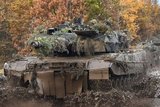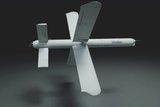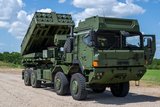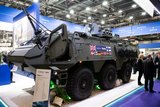EFV prototypes successfully complete tests, exceed threshold by 90 percent
The US Marine Corps' latest-generation Expeditionary Fighting Vehicle (EFV) prototypes have completed the required 500-hour reliability growth test at the Marine Corps' Amphibious Vehicle Test Branch, Marine Corps Base Camp Pendleton, Calif., demonstrating reliability that exceeds the testing threshold by 90 percent.
The raw score performance of the vehicles in the reliability testing is 31.2 hours mean time between operational mission failure, nearly double the 16.4-hour performance required for test success. In addition, vehicle operational readiness rates steadily remained at 97 percent throughout testing.
General Dynamics delivered seven new prototype vehicles to the Marine Corps in 2010. Reliability growth testing began in October 2010. The vehicles' performance indicates the program is on track to successfully complete the System Development and Demonstration-2 phase.
All reported preliminary failures are low-consequence issues, a tribute to the rigor and commitment of the EFV team, and the most significant aspect of this testing. No systems redesign work is required as a result of test findings.
These indicate significant endorsement of the "design for reliability" concept and processes, as well as the General Dynamics Land Systems team's capabilities and discipline.
The EFV program is Earned Value Management System (EVMS) certified. EVMS measures actual performance of work scope and the associated cost and schedule versus an agreed-to baseline plan, while using disciplined means of baseline change control for documenting any changes to the agreed baseline plan. EVMS is a best-practice standard, required by the Office of Management and Budget and the Federal Acquisition Regulation.
The Expeditionary Fighting Vehicle is the US Marine Corps' next-generation amphibious combat vehicle. It features superior water speeds of up to 25 knots, and an operating sea range of 56 nautical miles. On land, the EFV travels at speeds of up to 42 mph and has an operational range of 300 miles. The fully stabilized Mk 46 weapons station significantly bolsters lethality, and the EFV's blast protection is far superior to the current system. EFV's Command Variant represents a major leap in command and control on the move and situational awareness.
Source: General Dynamics
More from Land Warfare
-
![Hungary set to begin using Hero 400 loitering munitions]()
Hungary set to begin using Hero 400 loitering munitions
Developed by Israel's Uvision and with systems being sold in the thousands to multiple European NATO countries and the US, the Hero family of loitering systems is also in production in the US and Italy, the latter through Rheinmetall.
-
![Lockheed Martin to look further afield for GMARS rocket system opportunities]()
Lockheed Martin to look further afield for GMARS rocket system opportunities
The HX truck is already in use in many NATO and allied countries around the world as a logistics vehicle and carrier for high-value systems, including missile firing weapons, so its use for the Global Mobile Artillery Rocket System makes logistical sense.
-
Medium knocked out of British Army LMP, with CAVS as heavyweight champion
As the British Army seeks to modernise and consolidate its diverse vehicle fleet, yet another change in direction is underway.























